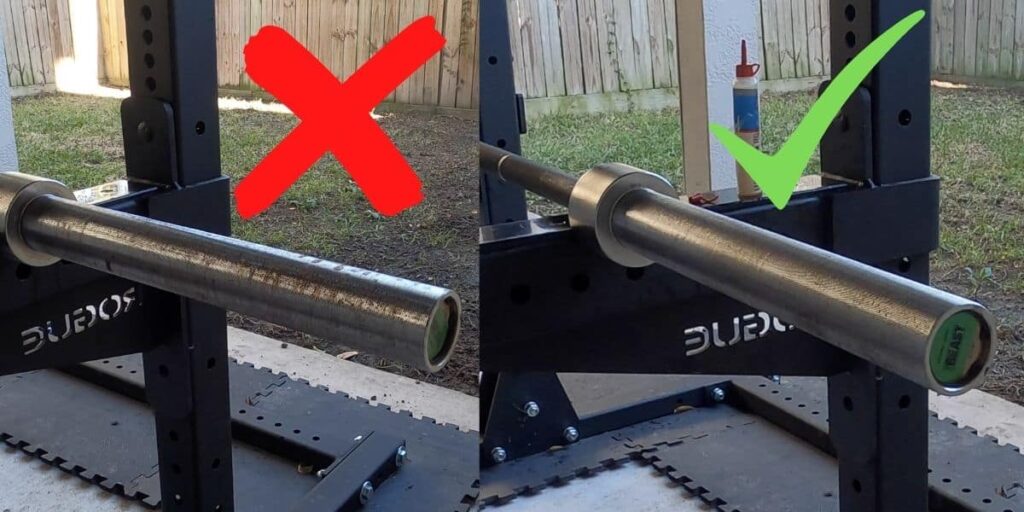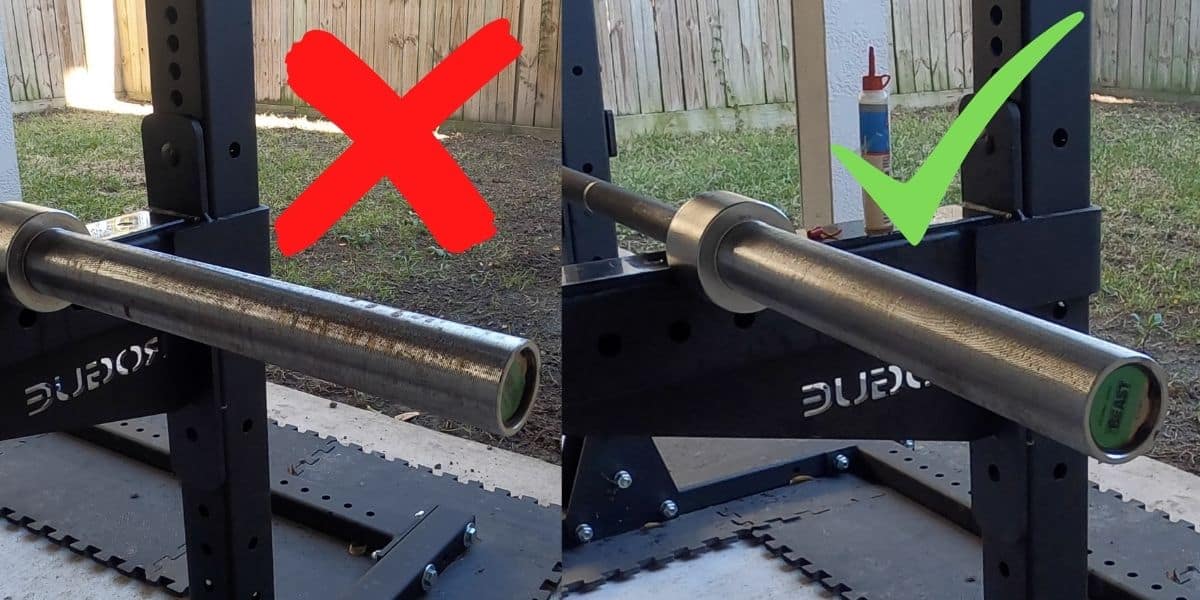
How to Remove Rust From Your Barbell: A Comprehensive Guide
Rust on your barbell is not just an aesthetic issue; it’s a sign of corrosion that can compromise the integrity and performance of your equipment. Whether you’re a seasoned powerlifter or a casual home gym enthusiast, maintaining your barbell is crucial. This guide provides a comprehensive, step-by-step approach to effectively remove rust from your barbell and prevent it from returning, ensuring your equipment remains in top condition for years to come. Ignoring rust can lead to a weakened barbell, increasing the risk of injury and potentially costing you more in the long run to replace the equipment.
Why Does Rust Form on Barbells?
Understanding why rust forms on your barbell is the first step in preventing it. Rust, or iron oxide, occurs when iron or steel is exposed to oxygen and moisture. Barbells, often made of steel, are particularly susceptible to rust due to sweat, humidity, and general environmental conditions. Here’s a breakdown of the key factors:
- Moisture: Sweat is a major culprit, especially during intense workouts. Even small amounts of moisture left on the barbell can initiate the rusting process.
- Humidity: High humidity levels in your gym or storage area accelerate rust formation.
- Lack of Maintenance: Infrequent cleaning and lubrication allow rust to develop and spread.
- Storage Conditions: Storing your barbell in damp or poorly ventilated areas significantly increases the risk of rust.
Essential Tools and Materials
Before you start the rust removal process, gather the necessary tools and materials. Having everything on hand will make the job more efficient and effective. Here’s what you’ll need:
- Wire Brush: A sturdy wire brush is essential for scrubbing away loose rust particles. Choose one with steel bristles for optimal effectiveness.
- Nylon Brush: A nylon brush is useful for gentler cleaning and for applying cleaning solutions.
- Cleaning Solutions:
- White Vinegar: A mild acid that effectively dissolves rust.
- Baking Soda: A gentle abrasive that helps lift rust without damaging the barbell.
- Commercial Rust Remover: For more stubborn rust, a specialized rust remover may be necessary. Follow the manufacturer’s instructions carefully.
- Lubricant: After removing the rust, apply a lubricant to protect the barbell from future corrosion. Options include:
- WD-40: A water displacement spray that provides a protective barrier against moisture.
- 3-in-1 Oil: A versatile lubricant that helps prevent rust and keeps the barbell functioning smoothly.
- Barbell Oil: Specialty barbell oils are available and designed specifically for barbell maintenance.
- Microfiber Cloths: For cleaning and drying the barbell.
- Gloves: To protect your hands from cleaning solutions and rust particles.
- Safety Glasses: To protect your eyes from flying debris.
Step-by-Step Guide to Removing Rust
Follow these steps to effectively remove rust from your barbell:
Step Preparation
Before you begin, prepare your workspace. Lay down a drop cloth or old towel to protect the floor. Wear gloves and safety glasses to protect yourself. Remove any weight plates from the barbell.
Step Initial Cleaning
Use a dry microfiber cloth to wipe down the barbell and remove any loose dirt, dust, or debris. This will make it easier to target the rust.
Step Applying the Cleaning Solution
Choose your preferred cleaning solution:
- White Vinegar: Soak a microfiber cloth in white vinegar and wrap it around the rusted areas of the barbell. Let it sit for at least 30 minutes, or longer for heavy rust.
- Baking Soda Paste: Mix baking soda with water to create a thick paste. Apply the paste to the rusted areas and let it sit for 15-20 minutes.
- Commercial Rust Remover: Apply the rust remover according to the manufacturer’s instructions. Be sure to use it in a well-ventilated area and wear appropriate protective gear.
Step Scrubbing the Rust
After allowing the cleaning solution to sit, use the wire brush to scrub the rusted areas. Apply firm, even pressure to remove the rust. For stubborn rust, you may need to repeat this step.
Use the nylon brush to clean the knurling (the textured grip area) of the barbell. The nylon brush will help remove rust and debris without damaging the knurling.
Step Rinsing and Drying
Once you’ve scrubbed away the rust, rinse the barbell thoroughly with water to remove any remaining cleaning solution and rust particles. Use a clean microfiber cloth to dry the barbell completely. Ensure there is no residual moisture, as this can lead to new rust formation.
Step Applying Lubricant
Apply a lubricant to protect the barbell from future rust. Spray WD-40, 3-in-1 oil, or barbell oil onto a microfiber cloth and wipe down the entire barbell. Pay special attention to the knurling and any areas that are prone to rust. This creates a protective barrier against moisture and helps maintain the barbell’s condition.
Alternative Methods for Removing Rust
Besides the methods outlined above, there are a few other techniques you can use to remove rust from your barbell:
- Lemon Juice and Salt: The citric acid in lemon juice can help dissolve rust. Sprinkle salt on the rusted areas, then squeeze lemon juice over the salt. Let it sit for a few hours, then scrub with a wire brush.
- Citric Acid Soak: For heavily rusted barbells, consider soaking the entire barbell in a citric acid solution. Mix citric acid powder with water (follow the instructions on the package) and submerge the barbell. Let it soak for 24 hours, then scrub and rinse.
- Electrolysis: This method uses an electrical current to remove rust. It requires specialized equipment and knowledge, so it’s best left to experienced individuals.
Preventing Future Rust
Preventing rust is easier than removing it. Here are some tips to keep your barbell in top condition:
- Wipe Down After Each Use: After every workout, wipe down your barbell with a clean, dry microfiber cloth to remove sweat and moisture.
- Regular Cleaning: Clean your barbell regularly with a nylon brush and a mild cleaning solution. This will help remove dirt, dust, and any early signs of rust.
- Lubricate Regularly: Apply a lubricant to your barbell every few weeks to protect it from moisture.
- Proper Storage: Store your barbell in a dry, well-ventilated area. Avoid storing it in damp or humid conditions.
- Use Barbell Covers: Consider using barbell covers to protect your barbell from dust, moisture, and other environmental factors.
- Invest in a Quality Barbell: Barbells with a higher quality coating such as cerakote are more resistant to rust.
When to Consider Professional Help
If the rust on your barbell is extensive or you’re uncomfortable performing the rust removal process yourself, consider seeking professional help. Some fitness equipment repair services offer barbell cleaning and restoration services. They have the tools and expertise to effectively remove rust and restore your barbell to its original condition.
The Importance of Barbell Maintenance
Maintaining your barbell is essential for several reasons:
- Safety: A rusted barbell can be weakened, increasing the risk of injury during workouts.
- Performance: Rust can affect the barbell’s spin and overall performance.
- Longevity: Regular maintenance extends the life of your barbell, saving you money in the long run.
- Hygiene: A clean barbell is more hygienic and reduces the risk of spreading germs.
Removing rust from your barbell is a straightforward process that can significantly extend the life of your equipment and ensure your safety during workouts. By following the steps outlined in this guide and adopting a regular maintenance routine, you can keep your barbell in top condition for years to come. Don’t let rust compromise your fitness goals – take proactive steps to protect your investment and enjoy a safe and effective workout every time. Remember, a well-maintained barbell is a key component of a successful and safe fitness journey. Making sure to regularly remove rust from your barbell and properly store it will keep your equipment in top shape for years to come. Neglecting this can lead to equipment failure and potential injuries.
[See also: How to Clean Gym Equipment]
[See also: Best Home Gym Essentials]
[See also: Weightlifting Safety Tips]

